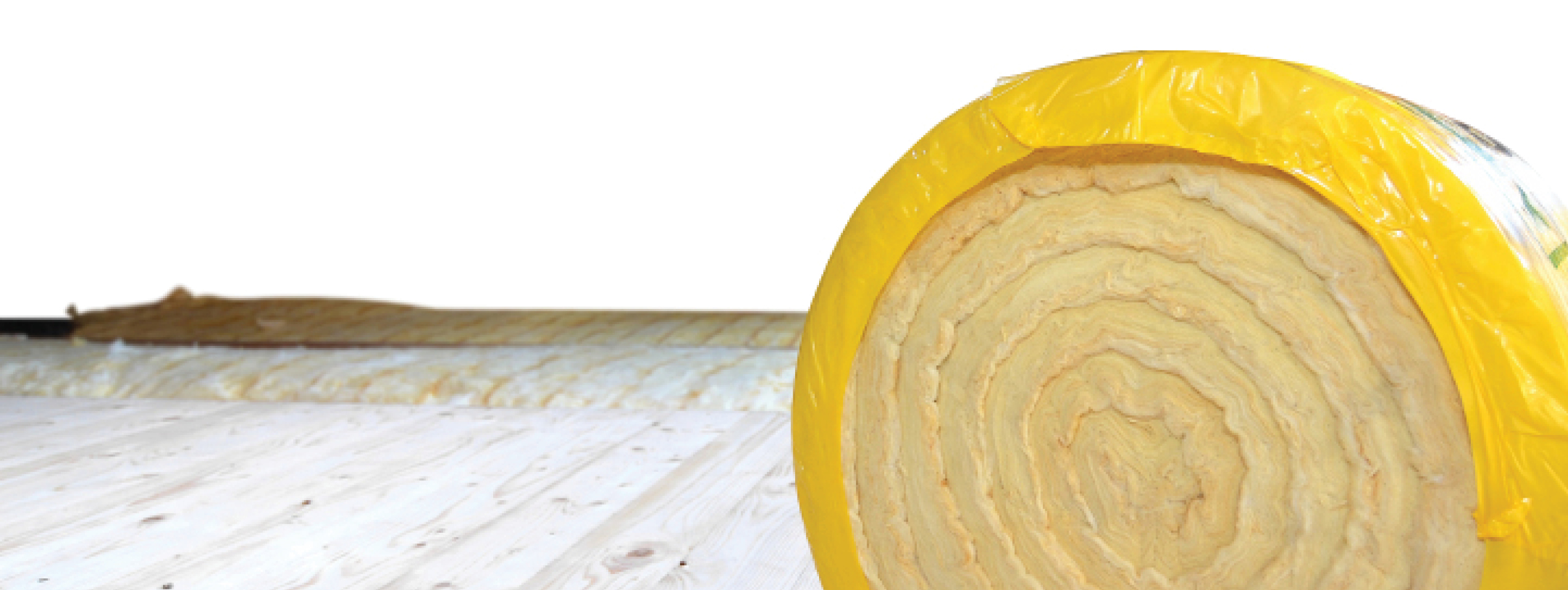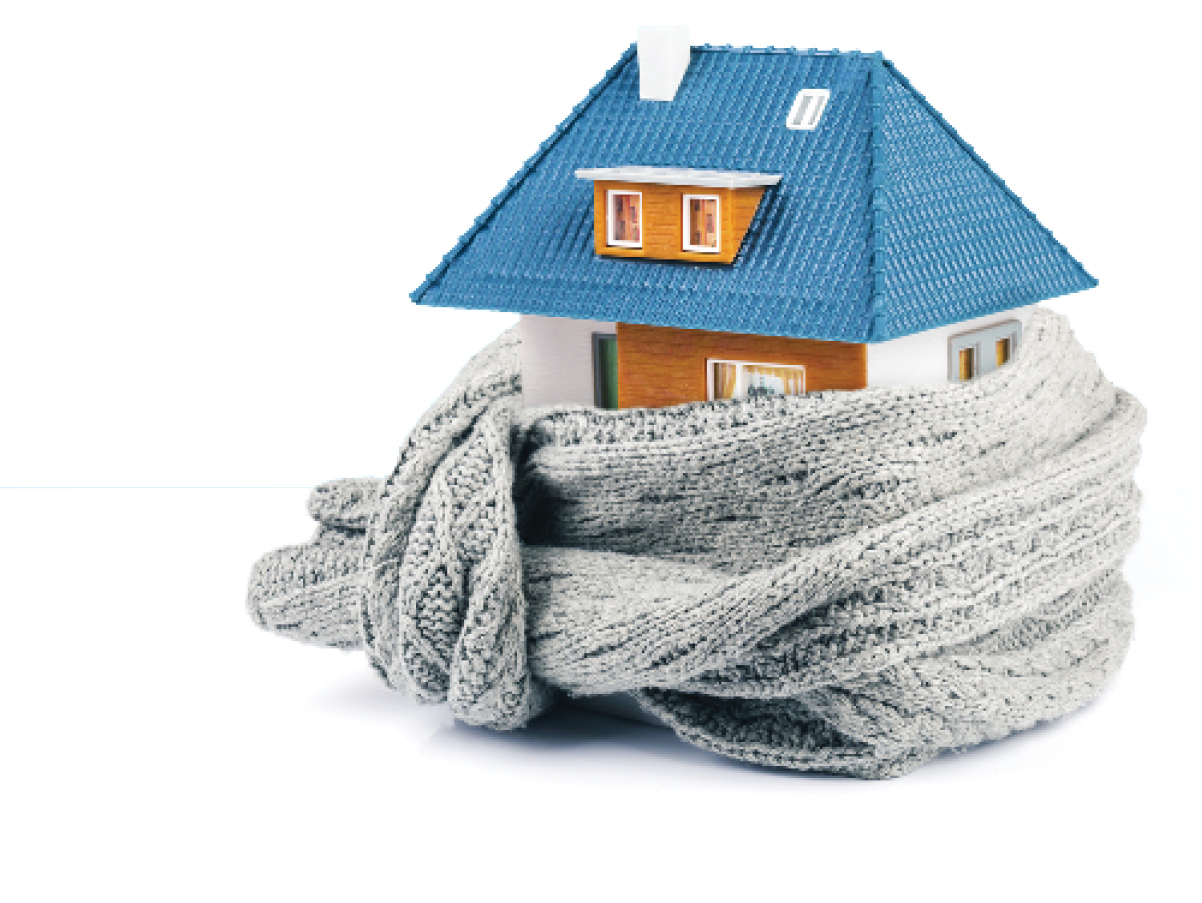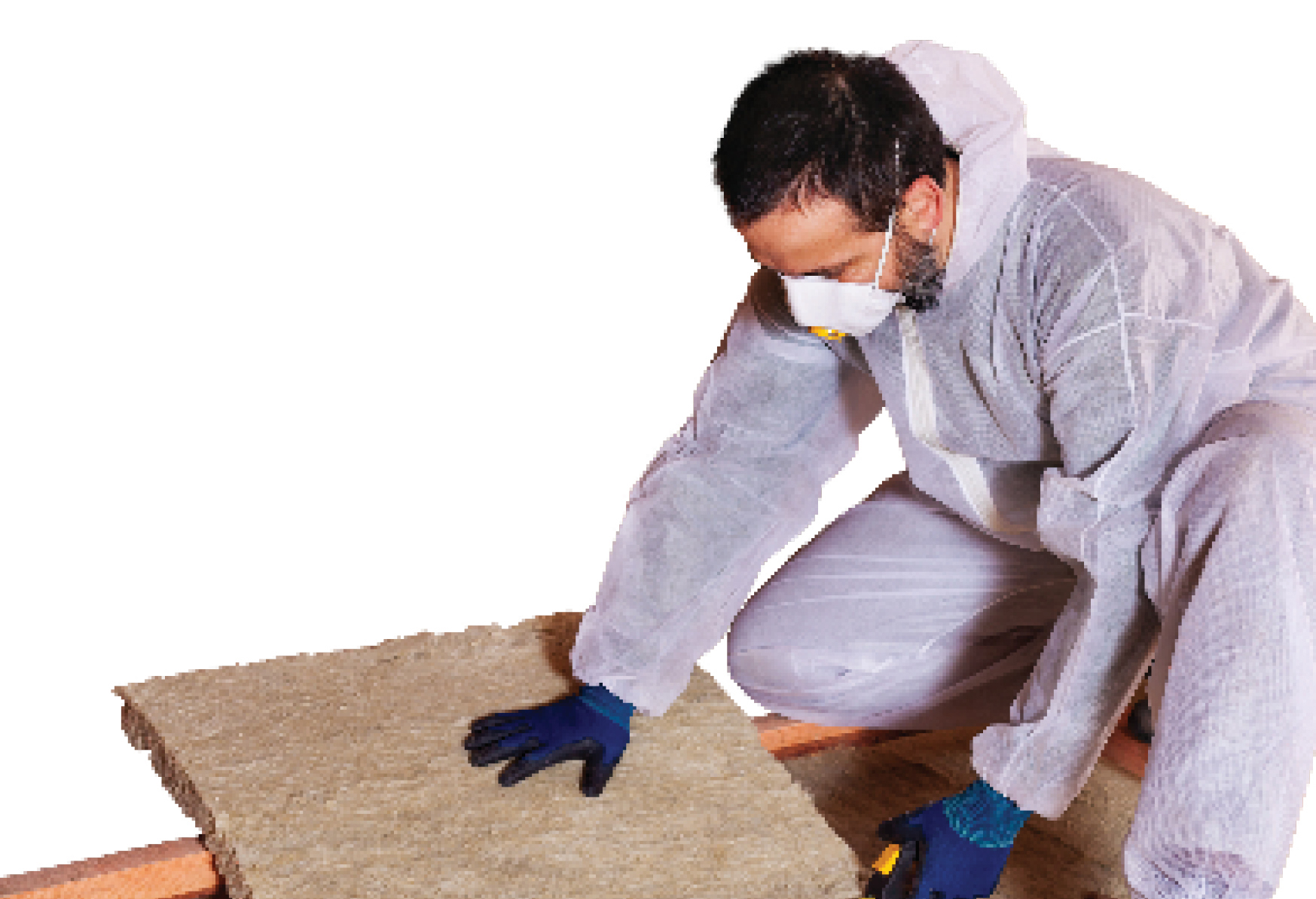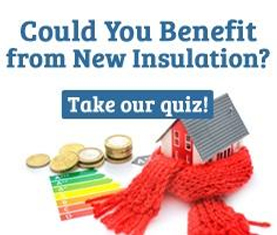Chapters
- Why Every Home Needs Insulation
- Conditioned Air Seeps Through the “Envelope”
- Add Up the Creature Comforts of Insulation
- Add Up the Cost Benefits of Insulation - After Sealing Air Leaks
- Value of Insulation Shown to Exceed the Cost
- Learn About the Different Types of Insulation
- Grasp the Value of R-value
- Where Insulation Typically Goes
HOME
INSULATION
GUIDE
Why Every Home Needs Insulation
It might be a little dramatic to say that it’s “like confronting a warm wall” – that feeling of coming face to face with warmer temperatures on the second floor of a home.
But it’s close, because heat naturally rises just as surely as cool air falls. If you don’t have a second story to experience this phenomenon, then your cathedral or two-story ceilings await. They will confirm this overheated condition, especially during the summer.
There is an elemental reason for this flow of warm air: it naturally and consistently seeks cooler space. As the U.S. Department of Energy says: “In winter, the heat moves directly from all heated living spaces to the outdoors and to adjacent unheated attics, garages and basements – wherever there is a difference in temperature. During the summer, heat moves from outdoors to the house interior.”
To conquer this battle – and bring discipline to the persistent nature of warm air – a home needs an infusion of cool air from an air conditioner in the summer and an influx of warm air from a furnace in the winter. And it needs insulation to fortify the resilience of both.

Conditioned Air Seeps Through the “Envelope”
If you can appreciate this basic push-and-pull dynamic of warm air, then you should enjoy learning about the influence of insulation and the difference it can make in your home, starting with the physical and financial benefits and leading to the various types of insulation and where they are best suited in a home.
The backdrop of this dynamic is vital: many American homes are virtual sieves, allowing conditioned air to flow freely from what First Quality Roofing & Insulation often refers to as the “envelope.” A term often used by builders, an envelope consists of a home’s roof and attic, subfloor, exterior doors, windows and exterior walls.
In fact, the “average American home” loses about 20 percent of the conditioned air someone is paying for every month through its envelope. As bad as this sounds, many other homes fare worse. But on balance, “If you added up all the leaks, holes and gaps in a typical home’s envelope, it would be the equivalent of having a window open every day of the year,” the department says.
Add Up the Creature Comforts of Insulation
Insulation counteracts this force of nature, keeping a home cooler in the summer and warmer in the winter. But it provides other tangible benefits, too, including:
- Bolstering humidity control – the No. 1 function all air conditioners are built to perform
- Blunting dirt, dust, pollen and other outdoor contaminants
- Blocking rodents, pests, insects, pollen and dust from entering your home
- Reducing outdoor noise

Add Up the Cost Benefits of Insulation - After Sealing Air Leaks
Most American homeowners spend about $2,000 a year to cool and heat their home, the department of energy says. Some estimates peg Las Vegas’s utility bills even higher, or at about $195 per month.
In either case, it makes logical sense that if insulation prevents cool air in the summer and warm air in the winter from streaming out of a home’s envelope, installing more insulation should reduce energy bills. But pinpointing an exact cost savings would be a little like trying to determine how much weight two people undertaking the same diet should lose in the same time frame; individual variables often skew the result.
In the case of insulation, the primary variable is sealing air leaks, especially around doors and windows, which are usually the two weakest links in a home’s envelope. Failing to plug leaks in a home would be like cranking the air conditioner in your car full blast and then lowering the window to let hot air pour inside. You will undercut the air conditioner in a hurry.
There are plenty of other places that a home leaks air, thereby impugning the value of insulation. They include:
- Any place where two walls meet or where a wall meets the ceiling
- Around electrical outlets, switch plates and recessed fixtures
- Behind bathtubs and shower stalls
- Cable TV, phone lines and other wiring outlets
- Ducts
- Fireplace damper
- Gaps around attic access hatches and pull-down stairs
- Soffits over cabinets
- Vents and fans
Once a home is properly sealed, insulation can deliver on its promise. The department of energy – in tandem with the U.S. Environmental Protection Agency – reports that “typical” American homeowners can save an average of 15 percent on their cooling and heating costs, and an average of 11 percent on their total energy costs, by “air sealing their homes and adding insulation in attics, floors over crawl spaces and accessible basement rim joists.”
Nevadans fared slightly better in the joint study. They saved:

Value of Insulation Shown to Exceed the Cost
First Quality Roofing & Insulation prefers the conservative tack, assuming homeowners will be pleasantly surprised if they achieve greater cost savings than 15 percent.
It turns out that we may have been overly conservative, at least in light of Remodeling magazine’s 2017 “Cost. vs. Value Report.”
It not only found that adding attic insulation is the most cost-effective home improvement homeowners can make; it found that the value of attic insulation exceeds the cost of installation
After collecting information on 29 home improvement projects in 99 urban and suburban markets across the country, the editors pegged the cost of installing fiberglass insulation at $1,343. It produced a resale value of $1,446, translating into a cost-to-value percentage of 107 percent.
The top projects among the other 28 on the list made respectable showings, revealing percentages of between 53.9 and 70 percent. But the value of insulation seemed to surprise the even-handed editors, who made of point of saying, “Putting loose-fill is the only project that returns a higher value than its cost.”
Learn About the Different Types of Insulation
Loose-fill is one of six most common types of insulation used by professional installers, who can help you select the right product for the project you face. Learning about the different types of insulation and their respective advantages can help you make educated choices so you can begin to reap the benefits of greater indoor comfort and lower energy bills.
Blankets, in the form of batts or rolls
Recognizable to many do-it-yourselfers for its pink and plump appearance, insulation blankets are made from mineral fibers such as fiberglass and rock wool. They are available in many conventional widths for spaces between wall studs and attic or floor joists. They must be hand-cut to fit non-standard spaces, such as near windows, doors or corners or where obstructions exist, such as near wires, electrical outlet boxes & pipes.
Primary Advantages:
Blankets are widely available, simple to use and adaptable to myriad uses.
Rigid Insulation
Consisting of fibrous materials or plastic foam, rigid insulation is just that: it actually resembles a board (and is sometimes covered with a reflective foil to further reduce heat flow). As the “powerhouse” of the six major insulation types, rigid insulation is installed around a home’s foundation and walls.
Primary Advantage:
Rigid insulation should provide the greatest insulating power to a home, from the roof to the foundation. It withstands high temperatures, too
Loose-fill
Made of cellulose, fiberglass or rock wool, loose fibers or fiber pellets are blown into place with pneumatic equipment. Loose-fill is ideal for filling wall cavities, covering unfinished attic floors and insulating irregularly shaped areas and around obstructions.
Primary Advantages:
Loose-fill insulation conforms to any space - and without disrupting the environment in which it is installed
Radiant Barriers
Just as the name implies, these foil products provide a barrier to stem heat gain in the summer and heat loss in the winter. With the foil facing down into an attic, these barriers are usually fastened across the bottom of joists.
Primary Advantage:
Radiant barriers are particularly beneficial in hot, sunny climates (like Nevada) to keep homes cool.
Reflective
Fabricated from aluminum foils with a backing such as cardboard, plastic film or polyethylene bubbles, reflective systems are usually installed between wall studs, floor joists or roof rafters.
Primary Advantages:
Reflective insulation is best at reducing downward heat flow.
Foam
Mixed and sprayed into place, foam comes in open-cell (made of polyicynene) and closed-cell (made of polyisocyanurate and polyurethane) forms. The former allows more water vapor to move through the material.
Primary Advantage:
Foam can be sprayed into the smallest spaces or cavities.
Insulation Types Generally Mix Well
By now, many homeowners identify the type of insulation they have in their home, see another type that appeals to them even more and then assume they are stuck with their “builder’s choice.” But this isn’t the case.
One of the prime benefits of insulation is that it can, and does, for the most part, intermingle easily. So if you have batts or rolls in your attic and want to switch to loose-fill – or the other way around – you can do so. Different products will produce similar results.
The one proviso:
It’s not a good idea to place higher density insulation on top of lower density insulation; the risk of compression is too great. So too is reducing the insulation’s R-value.
Grasp the Value of R-value
Despite the differences among insulation types, the one commonality they share is an R-value, which reflects its thermal resistance, or how well the insulation prevents heat from flowing through it. The composition, thickness and density all factor into an insulation’s R-value. When it’s all added up, “the higher the R-value, the better the thermal performance of the insulation,” the department of energy says.
It wouldn’t make sense for every home in America to install insulation with the same R-value. The winter climate is as different between Florida and Minnesota as the summer climate is between upper Maine and Nevada.
For this reason, the department of energy has divided the United States into eight climate zones. The entire state of Nevada is designated zone 5. With regard to the recommended attic insulation R-value for Las Vegas, there are two distinctions for attics:
For an attic with an existing layer of 3 or 4 inches of insulation, the value is
R38 to R49
For an uninsulated attic, the value is
R49 to R60
Since this number is so important, the Federal Trade Commission requires R-values be clearly marked on all commercial insulation products.
Where Insulation Typically Goes
Insulation with the proper R-value should be installed from the attic to the basement - and plenty of places in between - including:
- Unfinished Attic Spaces
- Exterior Walls
- Ceilings
- Finished Attic Rooms
- Floors Above Cold Spaces
- Foundations
- Crawl Spaces & Basements
- Unheated Garages
Check the Signs of Depleted Insulation
Certain warning signs point to insulation that has deteriorated or become seriously depleted. These signs include:
- Intensified drafts
- A higher level of humidity
- Noticeable variances in temperature from room to room on the same floor (and not just in rooms on different floors)
- Escalating energy bills even while energy use has remained fairly constant
- Flood or water damage that has denigrated the insulation
Conduct a Visual Check
Confirm your suspicions by assessing your attic. If the insulation is level with or rests just below the floor joists – so that the floor joists are visible – you probably need more attic insulation, the U.S. Department of Energy says. By contrast, “if you cannot see any of the floor joists because the insulation is well above them, you probably have enough and adding more may not be cost-effective,” the department says.
But look closely. “It is important that the insulation be evenly distributed with no low spots; sometimes there is enough insulation in the middle of the attic and very little along the eaves.”
If you’re uncertain, unfurl a measuring tape. Insert your tape measure into the insulation until the tape measure comes into contact with lumber. Measure the height of the insulation in this manner in several places throughout your attic. With R-38 insulation, a depth of between 10 and 14 inches is optimal.
Entrust Insulation & an Energy Audit
to the Professionals

While many homeowners undertake these last steps, it’s not unusual for them to feel out of their element. And the consequences of misjudging insulation are just too great. This is why insulation inspections and energy audits are best left to professionals who know exactly what to look for and can spot trouble signs - especially water leaks - that can undermine insulation’s structural integrity.
A home energy audit uses thermal or infrared scanning tools to detect temperature variations and where a home may be losing energy - from the attic to the basement. These audits often reveal a dearth of attic insulation - as well as a lack of ventilation that is integral to ensuring its veracity.
The U.S. Department of Energy pulls no punches “A professional home energy audit is the best way to determine where your home is losing energy and where you can save” money. Like insulation, a home energy audit represents an investment. And it’s an investment worth making because it pays dividends every day - and long into the future.

















